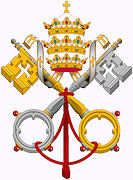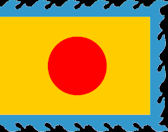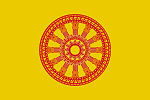

Zitierweise / cite as:
Payer, Alois <1944 - >: Chronik Thailands = กาลานุกรมสยามประเทศไทย. -- Chronik 1832 (Rama III). -- Fassung vom 2015-10-26. -- URL: http://www.payer.de/thailandchronik/chronik1832.htm
Erstmals publiziert: 2013-07-01
Überarbeitungen: 2015-10-26 [Ergänzungen] ; 2015-05-14 [Ergänzungen] ; 2015-05-09 [Teilung des Kapitels] ; 2015-05-08 [Ergänzungen] ; 2015-04-22 [Ergänzungen] ; 2015-03-16 [Ergänzungen] ; 2015-03-04 [Ergänzungen] ; 2015-01-24 [Ergänzungen] ; 2014-12-15 [Ergänzungen] ; 2014-11-13 [Ergänzungen] ; 2014-11-04 [Ergänzungen] ; 2014-10-27 [Ergänzungen] ; 2014-09-21 [Ergänzungen] ; 2014-08-20 [Ergänzungen] ; 2014-03-26 [Ergänzungen] ; 2014-03-08 [Ergänzungen] ; 2014-02-26 [Ergänzungen] ; 2014-01-13 [Ergänzungen] ; 2013-12-20 [Ergänzungen] ; 2013-12-05 [Ergänzungen] ; 2013-11-25 [Ergänzungen] ; 2013-11-05 [Ergänzungen] ; 2013-10-11 [Ergänzungen] ; 2013-09-28 [Ergänzungen] ; 2013-09-23 [Ergänzungen] ; 2013-09-17 [Ergänzungen] ; 2013-09-02 [Ergänzungen] ; 2013-08-23 [Ergänzungen] ; 2013-08-21 [Ergänzungen] ; 2013-08-14 [Ergänzungen] ; 2013-08-11 [Ergänzungen] ; 2013-07-13 [Ergänzungen] ; 2013-07-10 [Ergänzungen] ; 2013-07-08 [Ergänzungen]
©opyright: Dieser Text steht der
Allgemeinheit zur Verfügung. Eine Verwertung in Publikationen, die über übliche
Zitate hinausgeht, bedarf der ausdrücklichen Genehmigung des Herausgebers.
Dieser Text ist Teil der Abteilung
Thailand von
Tüpfli's Global Village Library
ช้างตายทั้งตัวเอาใบบัวปิดไม่มิด
|
Gewidmet meiner lieben Frau Margarete Payer die seit unserem ersten Besuch in Thailand 1974 mit mir die Liebe zu den und die Sorge um die Bewohner Thailands teilt. |
|
Bei thailändischen Statistiken muss man mit allen Fehlerquellen rechnen, die in folgendem Werk beschrieben sind:
Die Statistikdiagramme geben also meistens eher qualitative als korrekte quantitative Beziehungen wieder.
|
1832 - 1848

Renovierung und Erweiterung von Wat Pho (วัดโพธิ์).
Abb.: Lage von Wat Pho (วัดโพธิ์)
[Bildquelle: OpenStreetMap. -- Creative Commons Lizenz (Namensnennung, share alike)]Der Hofarzt Phraya Bamroe Ratchaphaetaya liefert bei der Renovierung medizinische Darstellungen und Inschriften:
Abb.: Medizinische Wandmalerei, Wat Pho (วัดโพธิ์), 2006
[Bildquelle: Moira Clunie. -- http://www.flickr.com/photos/18004443@N00/6090021727. -- Zugriff am 2013-06-24. -- Creative Commons Lizenz (Namensnennung, keine kommerzielle Nutzung, share alike)]
Abb.: Medizinische Wandmalereien, Wat Pho (วัดโพธิ์), 2005
[Bildquelle: Ryan Harvey. -- http://www.flickr.com/photos/87933807@N00/55390299/. -- Zugriff am 2013-06-24. -- Creative Commons Lizenz (Namensnennung, share alike)]
1832 - 1861


Verfolgung der Katholiken in Vietnam. Viele (insgesamt in der Folgezeit ca. 5.000) katholische Vietnamesen fliehen nach Siam. Da sie per Boot kommen, lassen sie sich vorwiegend in Südostthailand nieder.
Abb.: Siedlungsgebiete der katholischen Vietnamesen
[Bildquelle: CIA. -- Public domain]
Abb.: Martyrium von Bischof Pierre-Rose-Ursule Dumoulin-Borie (geb. 1808), Tonkin (Vietnam), 1838-11-24
[Bildquelle: Wikipedia. -- Public domain]
1832


Abb.: Zum Beispiel: Protestantische US-Missions-Ideologie 1832
1832

Es erscheint:
Gützlaff, Karl Friedrich August <1803-1851>: Remarks on the Siamese language. -- London, 1832. -- 29 cm. -- "From the Transactions of the Royal Asiatic Society of Great Britain and Ireland, vol. III."
1832
Prinz Phithak Thewet (พระเจ้าบรมวงศ์เธอ พระองค์เจ้ากุญชร กรมพระพิทักษsเทเวศร์, 1798 - 1863) lässt den Ban Moh Palace (วังบ้านหม้อ) erbauen.
Abb.: Lage des Ban Moh Palace (วังบ้านหม้อ)
[Bildquelle: OpenStreetMap. -- Creative Commons Lizenz (Namensnennung, share alike)]
1832/1833
Bau einer zweiten Festung in Samut Songkhram (สมุทรสงคราม)
Abb.: Lage von Samut Songkhram (สมุทรสงคราม)
[Bildquelle: OpenStreetMap. -- Creative Commons Lizenz (Namensnennung, share alike)]
1832
Bau einer Festung in Kanchanaburi (กาญจนบุรี). Mons (မောန်) müssen dazu die Ziegel produzieren.
Abb.: Lage von Kanchanaburi (กาญจนบุรี)
[Bildquelle: OpenStreetMap. -- Creative Commons Lizenz (Namensnennung, share alike)]
1832
Da große Überschwemmungen die Obstbaumpflanzungen schwer geschädigt haben, werden diese neu erfasst zum Zweck der Steuerfestsetzung.
1832
Pacht für Einnehmen der Alkoholsteuer in Bangkok: 105.000 Baht.
1832/1833
Dürre.
1832/1833
Khmer-Familien werden nach Ratchaburi (ราชบุรี) zwangsumgesiedelt.
Abb.: Lage von Ratchaburi (ราชบุรี)
[Bildquelle: Bartholomew, J. G. <1860 - 1920>: A literary & historical atlas of Asia. -- London, o. J.]
ca. 1832
สุนทรภู่ [Sunthon Phu] <1786 - 1855>: นิราศวัดเจ้าฟ้า [Reise-Gedicht (Nirat นิราศ) über seine Reise zum Wat Chaofa (วัดเจ้าฟ้า) in Ayutthaya (อยุธยา)]
1832

Der französische Apotheker Pierre Jean Robiquet (13 January 1780 – April 1840) isoliert das Opiat Codein aus Opium des Schlafmohns (Papaver somniferum).
Abb.: Schlafmohn (Papaver somniferum)
[Bildquelle: Mark Nesbitt and Delwen Samuel / Wikimedia. -- Public domain]
1832-01

Dreitägiges Volksfest anlässlich der Renovation von 9 Hauptklöstern in Bangkok.
1832-02-06 - 1832-02-09

Strafexpedition der US-Navy gegen das Dorf Kuala Batee in Aceh (Indonesien).
Abb.: Lage von Kuala Batee
[Bildquelle: OpenStreetMap. -- Creative Commons Lizenz (Namensnennung, share alike)]
Abb.: USS Potomac, 1834
[Bildquelel: Wikipedia. -- Public domain]
"The First Sumatran expedition, which featured the Battle of Quallah Battoo, or Kuala Batee in 1832, was a punitive expedition by the United States Navy against the village of Kuala Batee, presently a subdistrict in Southwest Aceh Regency (Kabupaten Aceh Barat Daya). The reprisal was in response to the massacre of the crew of the merchantman Friendship a year earlier. The frigate USS Potomac and its crew defeated the local Raja's forces and bombed the settlement. The expedition was successful in stopping Sumatran attacks on U.S. shipping for six years until another vessel was plundered under different circumstances, resulting in a second Sumatran expedition in 1838." [Quelle: http://en.wikipedia.org/wiki/First_Sumatran_Expedition. -- Zugriff am 2013-06-15]
1832-03-23

Thomas Aitchison Latta (1796 – 19 October 1833) schreibt einen Brief an das Central Board of Health in London. Der Brief wird in der Zeitschrift6 "The Lancet" veröffentlicht. Im Brief beschreibt Latta, wie er mit intravenösen Injektionen von Kochsalzlösungen Cholerakranke vor der Dehydration rettet. Lattas Behandlung setzt sich vorläufig nicht durch, heute gehört sie zum Standard. Cholera ist eine der Hauptseuchen in Siam.
Abb.: Intravenöse Injektion gegen Dehydration bei Cholera, 2. Hälfte 20. Jhdt.
[Bildquelle: Wellcome Images. -- Creative Commons Lizenz (Namensnennung, keine kommerzielle Nutzung, keine Bearbeitung)]
1832-05-01

Tod von Somdet Phra Bawornrajchao Maha Sakdi Polsep (สมเด็จพระบวรราชเจ้ามหาศักดิพลเสพ; 1785 – 1832), Front Palace (Uparaj) (กรมพระราชวังบวรสถานมงคล). Nach einer Beratung mit den Senabodi (เสนาบดี, Departementsvorsteher) beschließt der König, den Posten nicht neu zu besetzen.
1832-08
Pockenepidemie in Bangkok, viele Tote unter den Kindern.
1832-08


Der katholische Misionar Jean-Baptiste Pallegoix MEP (1805 - 1862) an die Muttergesellschaft Société des Missions étrangères de Paris (MEP) über den Zustand der katholischen Kirche in Siam:
"Nearly 70 years ago the Burmese invaded the kingdom of Siam. The number of Christians who either were carried away into captivity or fled was about 5.000, both Europeans and natives. Quite some years later, some families returned to their native land, and new Christian communities took shape. which have carried on to this day at Bangkok. There are three of them.
- First, the camp [residential settlement] of the Conception [โบสถ์วัดคอนเซ็ปชัญ], composed of about 600 Cambodians, brought as captives from Cambodia about 20 years ago. They have a priest of their nationality, and their chief, called Benait, was raised to the rank of a mandarin last year...
- Second, the camp of the Holy Cross [Santa Cruz] [วัดซางตาครู้ส], composed of about 450 descendants of Portuguese. Siamese. Chinese and Cochinchinese [southern Vietnamese], Their old church, which looks like a barn, is built of rotted planks and is falling into ruins. They are constructing a new one of brick, which is not yet finished.
- Third and finally, the camp of the Assumption [อาสนวิหารอัสสัมชัญ], where there is a beautiful church, the cathedral of the Apostolic Vicar, built 15 years ago by means of an ample donation sent from America for its construction. A college of 15 Siamese students is there, and 140 Christians are scattered in the vicinity of the garden of the bishop. They are of diverse nationalities, descendants of Portuguese, Chinese, Siamese and Cochinchinese.
At Chanthaburi [จันทบุรี]. a small old town near the sea. there is a Cochinchinese Christian community of 620 people, with a priest of their nationality. In the part of Cambodia subject to the king of Siam [the Battambang [ក្រុងបាត់ដំបង] region, which had a governor appointed by the king], there are about 200 Cambodian Christians, to whom the Apostolic Vicar is going to send a priest without delay. There are moreover, some 100 Christians dispersed here and there, even up to the northern-most town. Pitsiloque [Phitsanulok {พิษณุโลก}], inappropriately named Pourselouc' on our French maps. The number of [Asian] priests of the country is seven, but two are very old and feeble. There are now only two European missionaries in Siam: Mgr. Florens [Esprit-Marie Florens, 1762-1834)] (the Apostolic Vicar, feeble and aged 70) and me. Deschavannes [Claude Antoine Deschavannes, 1805 - 1831], to whom God gave only one year in this mission... contracted a pestilential fever [malaria] that took him from us in 15 days [in {6.} September 1831]."
[Übersetzt in: Breazeale, Kennon: Bishop Barthélemy Bruguière (1792 - 1835). -- JSS 96 (2008). -- http://www.siamese-heritage.org/jsspdf/2001/JSS_096_0d_Breazeale_BishopBarthelemyBruguiere.pdf. -- Zugriff am 2015-03-31]
1832-08-15
Feuersbrunst im Malaienviertel Bangkoks zerstört ca. 100 Häuser.
1832-10
Siamesische Überfälle auf Patani (ڤتاني), um Geld und Sklaven zu rauben.
Abb.: Lage von Patani (ڤتاني)
[Bildquelle: Bartholomew, J. G. <1860 - 1920>: A literary & historical atlas of Asia. -- London, o. J.]Zeitgenössische Berichte über die Gräueltaten der Siamesen:
"We are informed by person who accompanied the expedition, that the hordes of Siamese soldiers, ore more appropriately armed coolies, which were landed at [Songkhla] from the Junks, having proceeded overland to Patani, committed every outrage there. Most of the inhabitants fled at their approach; but many of them previously set fire to their houses.
Such as were taken, were made prisoners, and to prevent the fugitives from re-occupying the country, (which is described as having been most beautiful and in good cultivation) every fruit tree was cut down, and the country devastated ... Of the captives, the women suffered most from their brutality, as neither infant youth, nor age were spared. But to close this ... revolting scene, the captives were thrust by hundreds into the filthy holds of the junks, which were totally incapable of containing so many, and in most instances, the wretched beings were obliged to trample or lay on each other, by which numbers of them perished.""About the end of August, the [Patani] Malays being quiet, and everything settled to the satisfaction of the [General], he proposed to return to Bangkok with his principle spoils: viz. from four to five thousand prisoners, or slaves. Those miserable, wretched creatures were forced on board the small junks and war-boats, and were crowded together as thickly as they could be stowed, without any room being left for them to move. When they arrived at Bangkok and were landed on the banks of the river the sight they presented was most miserable, and the stench of their persons and vessels, dreadful. One fourth were covered with the small pox. They were all placed or huddled together, in one side of the building called the British Factory ,.."
[Quelle: Moor, J. H.: Notices of the Indian Archipelago, and adjacent countries : being a collection of papers relating to Borneo, Celebes, Bali, Java, Sumatra, Nias, The Philippine Islands, Sulus, Siam, Cochin China, Malayan peninsula ... . -- Singapore, 1837. -- Zitiert in: Ghosts of the past in Southern Thailand : essays on the history and historiography of Patani / ed. by Patrick Jory. -- v, 2013. -- 336 S. : Ill. ; 23 cm. -- ISBN 978-9971-69-635-1. -- S. 153f.]
"I have seen most of the poor, wretched creatures that have been brought up from the Malay Coast, and were I even capable of conveying to you, in a slight degree, the miserable sights I have seen, it would make you shudder ... The number of Malay slaves brought up here, within the last six weeks, will amount to between 4,200 and 5,000 souls, consisting principally of very old women and numbers of young children, and only a very few able-bodied men. Those, I suppose, who were able to run, made their escape, and left the old, sickly and very young to the mercy of the ... Siamese invaders." "Out of compliment, of course, to their Ally, the British Indian Government, the poor, wretched, diseased creatures, (and few indeed, were free of disease) were quartered in what the Siamese style, ‘the British Factory.’
I occupy one side, and the Malays, to the amount of 400 or 500, were confined to the other, until a conveyance could be got to take them up the country, or perhaps until they were given as presents to some of the great men here. They were counted in and out just like so much sheep, and when an order was given in presents to some of the Siamese Chiefs to send off 40 or 50, it did not matter whether they were sick or well; off they must go, the healthy carrying the sick, and in some instances you would see them counting out old men and women, in such a condition, that it was scarcely possible they could have lived, had they been left alone, a single hour. Most of the [Patani] Malays had immense large ulcers about their feet or legs, and the stench from them alone was enough to breed a plague. Besides that, they were all swarming with lice, and covered with the itch and to wind up all, had sore eyes. At night, could you but have seen them — without beds, or mats, or musquito curtains — the sick, the young and the old, all huddled together; and even dead bodies lying amongst them. The children, from sunset to sunrise were continually crying — the poor little wretches must have been nearly eaten up by the musquitoes. Another thing I was obliged to observe, was that no regard was paid to the parental feelings of either the father or mother. I often saw the children taken away from their parents, altho’ the father generally seemed quite callous, the poor mother used to set up such a howling, tearing her hair, and begging and praying to be allowed to accompany her only child."[Quelle: Moor, J. H. -- In: Singapore Chronicle 1832-11-22. -- Zitiert in: Ghosts of the past in Southern Thailand : essays on the history and historiography of Patani / ed. by Patrick Jory. -- v, 2013. -- 336 S. : Ill. ; 23 cm. -- ISBN 978-9971-69-635-1. -- S. 154ff.]
ausführlich: http://www.payer.de/thailandchronik/ressourcen.htm
Zu Chronik 1833 (Rama III.)